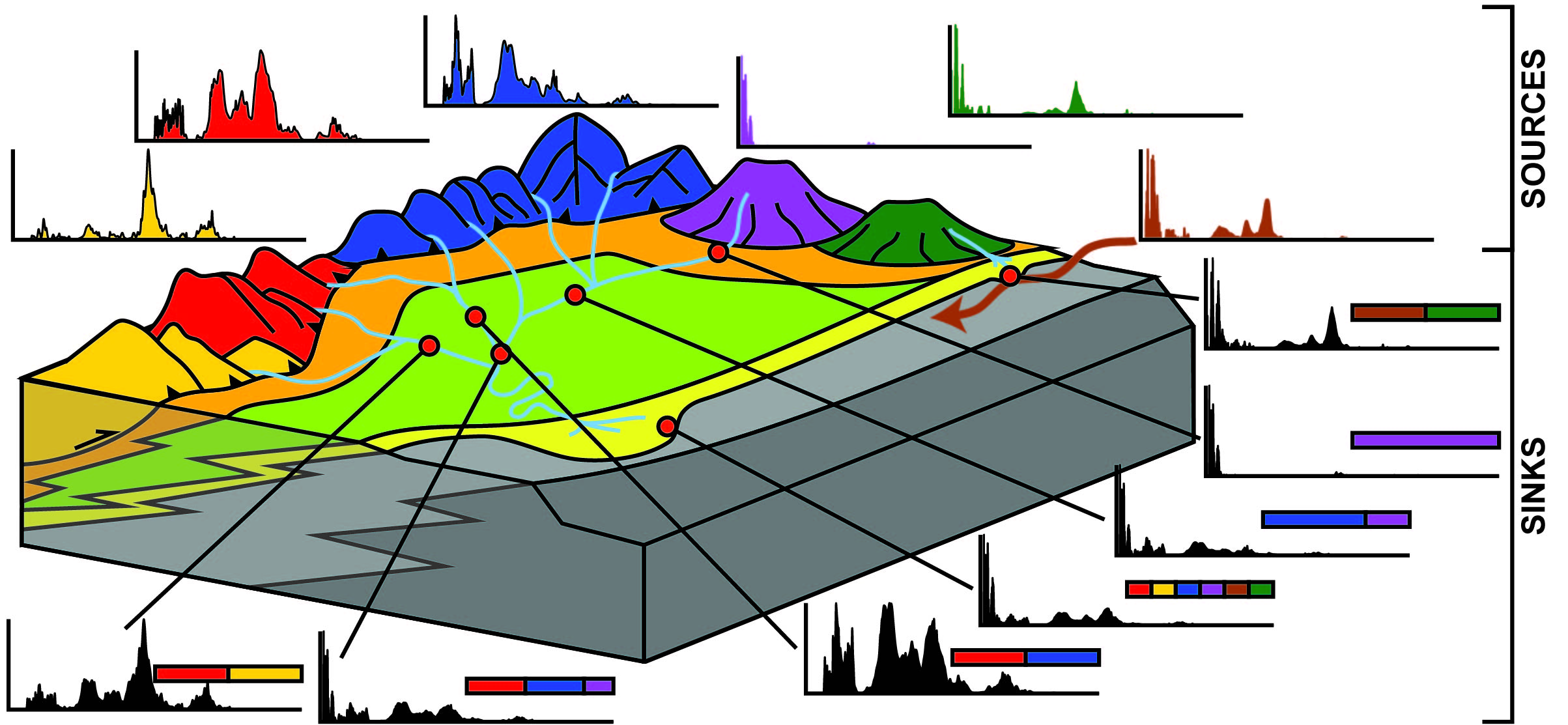Whodunit?: A new forensic tool in the geodetective’s belt

Joel Saylor and Kurt Sundell
Creating a green economy requires increasing amounts of metals to support electrical generation, transport, and storage. However, new sources of metal and other economically valuable resources are increasingly difficult to find. Information about the location of economic resources is stored in sediments and sedimentary rocks that are eroded from the rocks that originally contained those resources. New research by Joel Saylor and Kurt Sundell develops a method of extracting information about the eroded rocks from the sediments themselves, even if the original rocks are unknown or unavailable for analysis. The new method, called non-negative matrix factorization, can identify specific chemical or isotopic features of the original rocks, as well as identifying the relative amounts of different source rocks that might have been mixed into a specific sediment sample. This new tool can guide exploration by identifying regions that have a high proportion of the economically relevant rocks and so help geoscientists zero in on potential areas for future mines.

Saylor and Sundell's research provides a tool that links sources of sediment (colored mountains and associated curves) containing economically valuable resources to the sediments eroded from them (red dots and associated black curves).